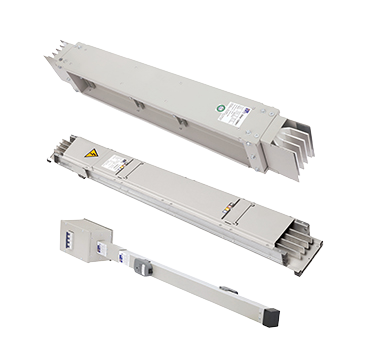When it comes to distributing power, busbars offer numerous advantages over traditional cable systems. These advantages span various aspects, from efficiency to safety, making them a preferred choice in many applications.
One of the primary advantages of busbars is their space efficiency. Unlike bulky cables that require ample room for installation, busbars take up considerably less space. This space-saving feature is invaluable, particularly in environments where space is limited, such as crowded industrial settings or compact urban areas.
Moreover, busbars exhibit better resistance compared to cables, especially in the event of short circuits. Their rigid design elements provide enhanced resistance, ensuring greater reliability and safety in electrical systems.
In addition to resistance, busbars generate less heat during operation than cables. This reduced heat generation not only contributes to energy efficiency but also minimizes the risk of overheating, thereby enhancing system reliability.
Furthermore, busbars experience lower voltage drop over distances compared to cables. This means that the voltage remains more consistent along the length of the busbar, resulting in more reliable power delivery to connected devices.
Another significant advantage of busbars is their ease of installation. Busbar trunking systems can be installed more quickly and efficiently than conventional cable systems, reducing labor costs and installation time.
Moreover, busbars offer greater configurability, allowing for easier modifications and expansions to the power distribution network. This flexibility is particularly beneficial in environments where future changes or upgrades are anticipated.
Additionally, busbars generally have a longer lifespan than cables, resulting in reduced maintenance requirements and costs over time. Their durability and longevity make them a cost-effective solution for long-term power distribution needs.
From a safety standpoint, busbars are typically safer to handle during installation and maintenance due to their rigid structure and reduced risk of damage compared to cables.
In summary, the advantages of using busbars for power distribution include space efficiency, better resistance, reduced heat generation, lower voltage drop, ease of installation, configurability, longer lifespan, and enhanced safety. These benefits make busbars a preferred choice for various applications where reliable and efficient power distribution is essential.
Manikaran is known for providing top-quality busbar trunking systems that incorporate these advantages. Their systems are constructed using high-quality materials, customizable to specific project requirements, easy to install, reliable, and supported by excellent technical assistance.
By choosing busbars over cables for power distribution and opting for Manikaran’s reliable busbar trunking systems, businesses can ensure efficient, safe, and cost-effective electrical infrastructure.

